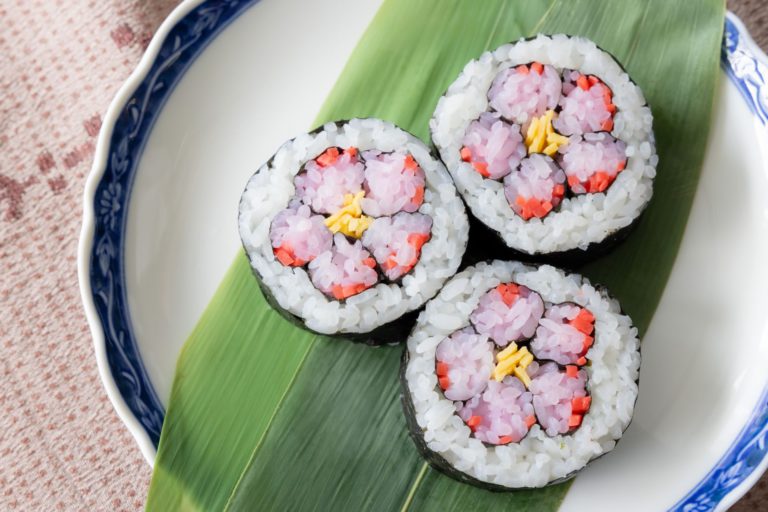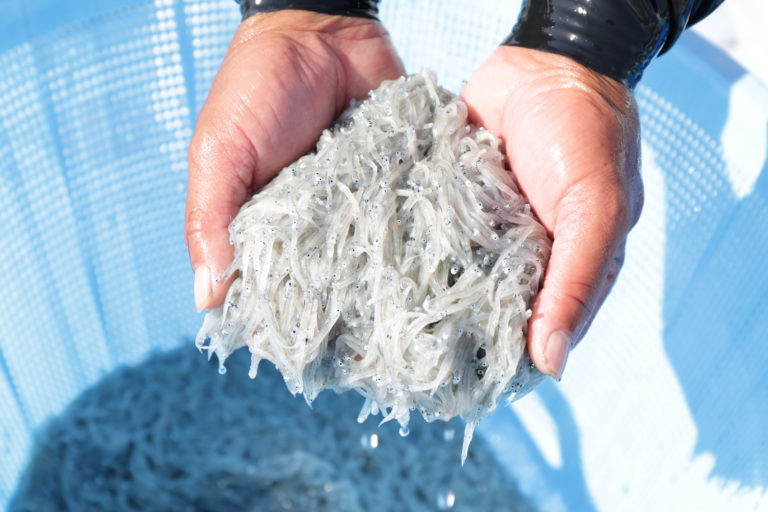The Brilliant White Threads that Serve as an Edible Link with History
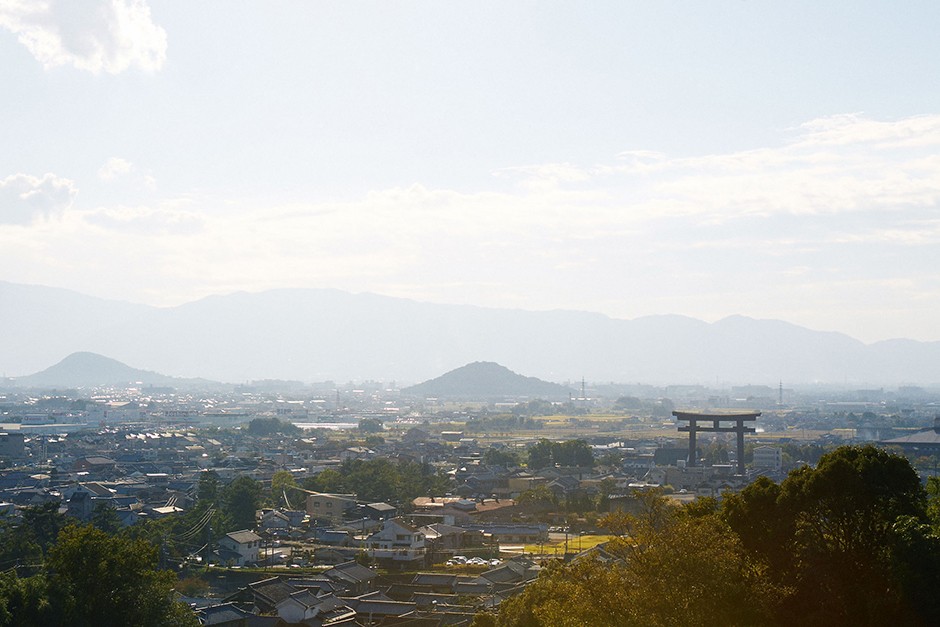
The torii gate in Miwa is a magnificent 30-meter edifice that towers above the rooftops of the township. It is a glorious morning spectacle, with the mountains looming away in the distance, in the topographical formation familiar to the flat plain areas of Japan.
The old buildings form an evocative streetscape, and together with the countless shrines convey a real sense of living history. You feel as if you’ve gone back in time.
Miwa has long been known as the birthplace of somen noodles, but the locals will tell you that this town has played a much wider role in Japan’s food culture, with a long and proud history of making sake and holding markets trading in edible produce.
Omiwa Shrine?one of the oldest in Japan
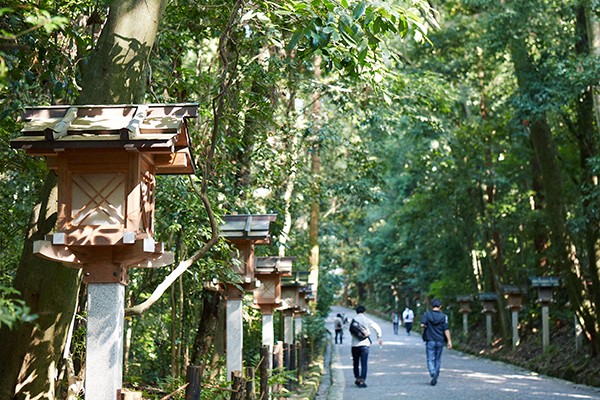
The people of Miwa have a great respect for history and religious tradition, and are rightly proud to have one of Japan’s oldest shrines in their midst: the venerable Omiwa Shrine. Located at the base of Mt. Miwa, which soars high above the middle of town, its history is thought to stretch right back to prehistoric times. Visitors to Omiwa Shrine include many distinguished and highly respected religious figures. In recent years it has become a popular tourist destination, particularly among young women. The specific deity worshipped at Omiwa Shrine is Mt. Omiwa itself, and many visitors take the opportunity to tackle the steep but rewarding trail up the mountainside to a height of around 500 meters.
While Omiwa Shrine occupies a special place in the Shinto religion, it also has an historical connection to the traditional form of somen noodles known as Miwa Somen.

Miwa Somen dates back over 1,200 years to when Tanenushi, second son of Omiwanoason Saikusa (who was equivalent to the fifth chief priest of Omiwa Shrine) saw that the fertile land at Miwa and the clear waters from Mt. Omiwa were ideal for growing wheat, and decided to use his flour to make somen noodles.
Today, Omiwa Shrine hosts the annual Bokujosai festival on February 5, a ceremony to determine the opening price for Miwa Somen noodles. The figure that emerges at the Bokujosai festival is said to have a major bearing on somen prices throughout Japan over the year ahead.
The best season for somen noodles: wait a few months!
Located on the flat plains, Miwa has a fairly dry climate characterized by low rainfall and dry winds from the south-west. Combined with the bountiful supplies of clear, fresh water and nearby mountain slopes suited to water wheels, it was historically an ideal place for noodle-making. The farmers soon discovered that they could make somen noodles at home during the winter fallow period. Before long, somen production had become a thriving industry in Miwa and become the staple product of the region.
Although somen noodles are normally associated with summer, it turns out that the coldest months from November to March are the best for somen production. This is because the firmness that is a distinct characteristic of the somen noodle develops over a period of months. For best results, the somen should be made in winter and left in storage until after the summer rainy season. So in this sense, summer is the best “season” for somen.
Ikeri, maker of hand-rolled somen noodles, founded in 1850

Founded over 160 years ago, Ikeri is one of the longest continually operating somen producers in Miwa, the birthplace of somen noodles.
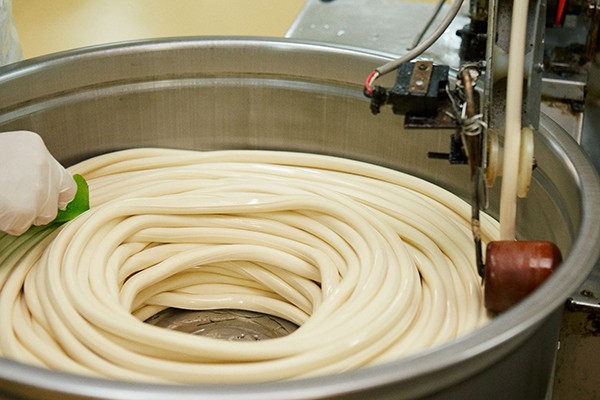
Ikeri makes somen noodles using the traditional tenobe hand-rolling technique. The flour is mixed with salt and water then kneaded well to make the dough. The dough is brushed with cottonseed oil or equivalent, then rolled and dried, which helps it to mature. Unlike factory-produced somen, which is cut into thin strips and dried, the tenobe technique takes about two days and involves no cutting, just constant hand-rolling to make the dough gradually thinner and thinner. Despite the introduction of modern production equipment, Ikeri still relies on the expertise and care of experienced artisans to make somen the traditional way.
Experience is the key
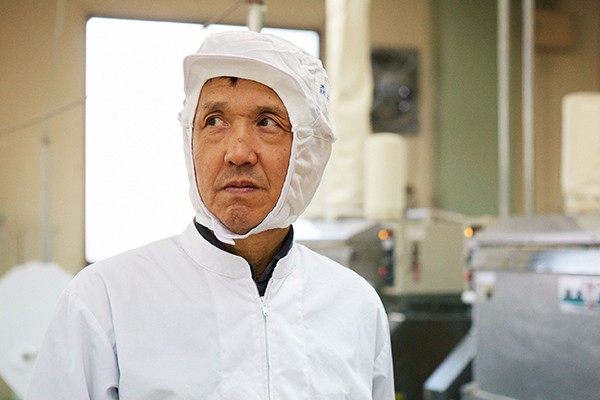
Determining the right quantity of salt is vital to achieving the best results. The salt content affects the rate of maturation as well as the flavor and eventual firmness of the somen noodles. And the amount of salt needs to be tailored to the temperature and humidity at the time of production. This is something that requires the expertise of a highly skilled operator who goes by the name omoshi?it is beyond the capabilities of a mechanical production line. The omoshi carefully monitors the temperature and humidity throughout the day to determine the optimum salt content. The omoshi has an uncanny ability to assess the temperature and humidity, a sixth sense that goes beyond the data generated by temperature and humidity gauges. The omoshi makes split-second decisions based on his sense of the ambient conditions, using quaint phrases that translate to “Today the moisture is at my ankles” or “It’s up to my knees”.
We spoke with Ikeri factory manager Sukehiro Morimoto, a highly skilled omoshi with over 20 years of experience. He told us that January and February is the best time for making somen noodles because the temperature and humidity are fairly consistent. “Whereas early spring and early autumn can be quite difficult due to the variable nature of the weather conditions. You have to be adaptable. It takes years of experience and a certain intuition; you couldn’t achieve the same thing on a production line.”
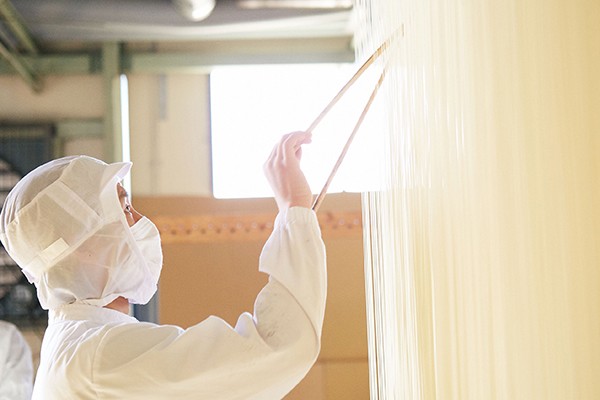
Today, Morimoto is busy adjusting the temperature and humidity and monitoring process conditions in the dedicated facility called the kobikibeya where the somen noodles are stored for maturation
“To make really good somen you have to have the ability to judge the level of maturation, together with a great deal of patience and attention to detail,” explains Morimoto. “If you’re not that smart or that dedicated you won’t make the cut.”
Making somen involves endless repetition of two processes: drawing out then resting the noodles. What seems simple is actually quite complex because the omoshi must take great care and maintain complete control of the maturing process. They have to carefully monitor the degree of maturation, using intuition and judgment that is beyond mere mechanics. These highly experienced artisans put their heart and soul into every aspect of the process. The result is the unparalleled texture and taste of Ikeri somen noodles.
Enjoy Miwa Somen noodles at Senjutei restaurant
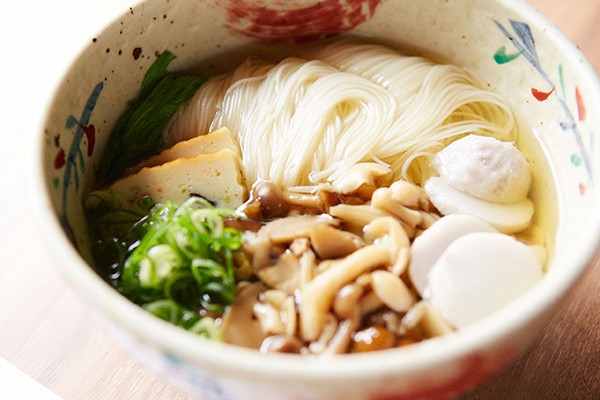
Somen is traditionally eaten cold in summer together with tsuyu broth. But it can also be eaten in other ways, such as the hot winter dish known as nyumen.
We took the opportunity to stop in at Senjutei, a restaurant run by Ikeri that, as you might expect, specializes in dishes made with Miwa Somen noodles, including cold summer somen as well as nyumen and traditional kaiseki-ryori banquets. Senjutei is always busy, being popular with locals and tourists alike.
Chilly autumn is the perfect time for a warming bowl of kinoko nyumen featuring seasonal additions such as shimeji, shiitake and king oyster mushrooms, taro yams and mizuna greens. The somen noodles were complemented by a slightly sweetened broth featuring the sharp taste of yuzu citron. Our meal was served together with fried somen, which combines perfectly with other ingredients to make a subtle statement of the distinctive characteristics of the thin somen noodle. It is also great as a side dish with rice or a snack to have with drinks.
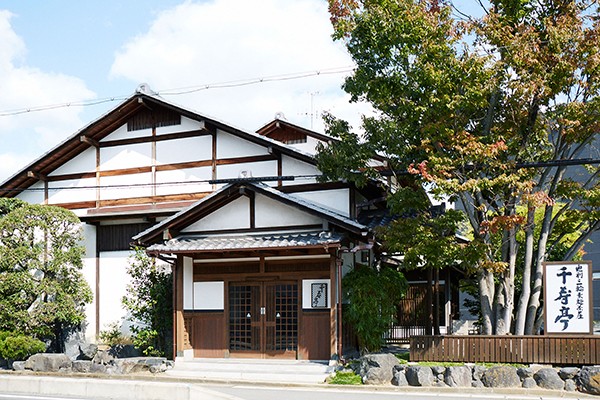
Senjutei head chef Mr. Fujita takes a keen interest in searching out somen variants, including favorites such as Tomato Miso Nyumen and Somen with Chestnuts. There are certainly many ways to enjoy these wonderful noodles.
Although it’s all too easy to fall back on the standard somen dishes that we all know and love, Senjutei has shown us that there is a whole new world of somen cuisine utilizing seasonal ingredients and seasonal flavors just waiting to be discovered.
Even if you can’t make it all the way to Miwa, you can order the very same noodles used by Senjutei and have them delivered to your door. Then you can enjoy somen noodles together with seasonal ingredients in the comfort of your own home.

